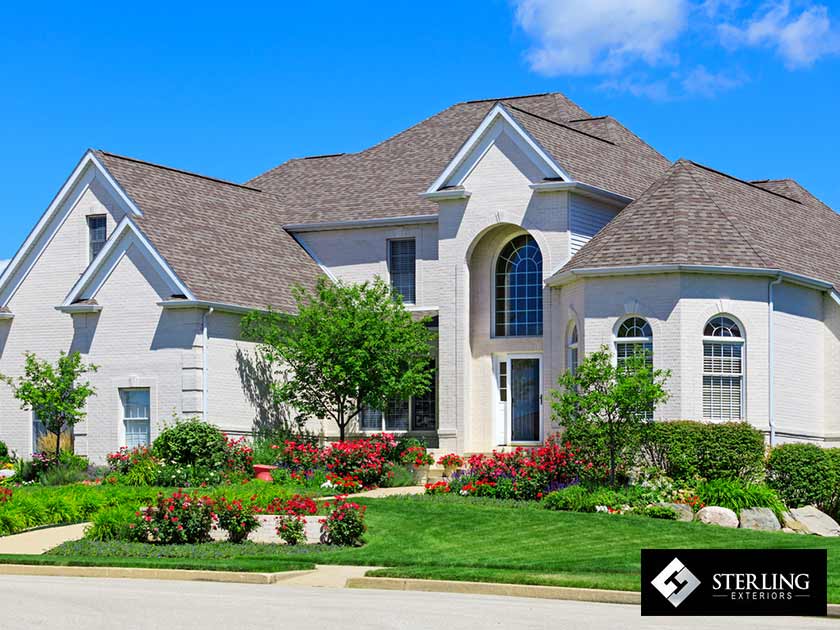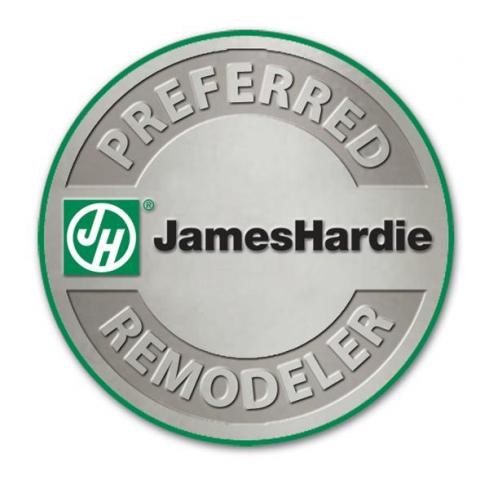When you are making preparations to sell your home, you most likely have a to-do list a mile long, with some items more pressing than others. What you include in your list will be based on a few important things, like whether you want to get paid a top dollar or simply sell as fast as possible. In many instances, however, one of the most essential items on your to-do list is ensuring the tip-top shape of your roof. So what could be the main reason behind this? For the most part, it is because most lenders will not approve a mortgage on a house with an old, shabby roof.

Keep on reading to find out what your options are — residential roofing and outdoor living contractor Sterling Exteriors will guide you through.
Can You Sell a House With a Failing Roof?
If you have noticed that your roof is showing symptoms of water-related damage, like leaks, then you are dealing with a serious problem. Over time, weather elements and wind-driven debris can cause your shingles to curl, break, or detach and the flashing around vents and chimneys to deteriorate. A simple repair may be able to patch up the issue, but there are times when a full-on replacement may be due.
There are two common approaches to selling your home with a leaky roof.
- First, you can avoid the expense and time of replacing your damaged roof by putting your home up for sale in its current condition. Inform the buyer and let them handle the problem.
- The second option is to undergo the entire process of replacing the roof yourself and then putting the house on the market.
What Are the Problems That Can Arise When You Sell a House With a Bad Roof?
When selling your house as-is, you will quickly discover that most people cannot afford to purchase a residential property with a roof that is in need of extensive repairs. Most potential buyers do not possess large amounts of cash and use bank financing and other conventional methods to make the purchase. After the closing, they will not have the needed money to fix the existing roofing problem, whether leaks, mold, rot, or more. Furthermore, the buyer’s lender will require your home to be inspected and appraised.
In America, most states require homeowners to complete a residential property disclosure form. Property disclosure statements inform potential buyers of existing defects to the home, protecting the sellers from liability for issues they told buyers about before the sale is finalized. This disclosure form includes vital questions about the roof. If the form does not mention the condition of the roof in particular, it will mandate you to disclose any notable problems with the residential property. This form will be examined by the appraiser. If the roof needs to be replaced, it will affect the total resale value of the property, reducing the amount that the buyer can borrow to purchase your home. This will leave them with no choice but to make up the difference with cash which they may not have.
Moreover, the lender will ask about the inspection and to see the appraisal since your property will be the collateral for their loan. Inspectors will also remark that the presence of leaks in the roof or attic may indicate that there is damage to the other parts of the house. The questionable condition of your residential property may convince the lender to turn down the loan.
Even if the homeowner can make the purchase without financing, the lender will still insist on inspecting the property and perhaps getting an appraisal. If your home needs this much repair, a potential buyer will typically pass on buying the property with roofing issues to avoid any inconvenience down the road.
Who Would Buy a House With a Leaky Roof?
If you are considering selling your home as-is, then you are generally looking for a buyer who:
- will buy your house for cash,
- is able to deal with a damaged roof and other potential issues, and
- is not purchasing the house to live in it.
Oftentimes, real estate investors may be willing to buy properties with bad roofs. These investors are professionals who actively look for houses that are in need of repairs or modifications. They will buy these properties for less than market prices and opt to do the work themselves. For work that demands the skills of licensed tradesmen, they usually have sub-contractors that they hire regularly.
Some investors flip houses instead. It is the strategy in which an investor purchases a property, fixes it, and sells it for a profit. Others are long-term investors who will rent the property after performing needed repairs or full-on replacements.
What Are the Advantages of Replacing Your Roof Before Selling Your Home?
When touring your residential property, one of the principal things a meticulous buyer will examine is the current condition of your roof. According to a siding expert, below are some of the most pressing reasons why you should consider replacing your damaged roof before listing your home.
It comes as no surprise that real estate buyers care about the state of their future living space, so if your roof is sagging, cracking, leaking, or missing shingles, it will scare off a substantial number of potential buyers. While it is possible to discount the price to make up for the potential cost of a roof replacement or offer an allowance to perform roof repairs, you may still lose a potential sale simply because the buyer does not want to deal with the additional hassle.
A brand new roof will also improve the architectural appearance and therefore curb appeal of your home, making it a lot easier to market and sell. A quicker sale can provide several financial benefits depending on your objectives.
What Are the Disadvantages of Replacing Your Roof Before Selling Your Home?
The most notable downside to replacing your roof — or siding and other exterior components, for that matter — is the potential cost. It is expensive to invest in a new roof and you have no guarantee that the investment will be recouped at the time of sale.
The cost of repairing or replacing a roof usually depends on a number of factors, including location, materials, and complexity of the roof. About 40 percent for materials and 60 percent for overhead and labor is the common breakdown of roofing costs. If you spend $8,000 replacing your roof, for example, around $3,200 will be spent on materials and $4,800 will go to overhead and labor.
Other factors that can influence the total cost of roof replacement include roof inspection and building permits. A roof inspection should be conducted by a licensed roofing contractor. The inspector will look at the materials, structure, and presence of leaks to determine the condition of the roof. It typically costs between $120 and $300. Meanwhile, the cost of the permit is usually determined by the amount of work being performed. For roof work, the average cost of a permit is from $150 to $400.
Let Top-Rated Professionals Help Achieve Your Dream Exterior
You can count on Sterling Exteriors for high-quality home improvement solutions, including roof replacement, siding installation, and outdoor living construction. Our certified team is committed to providing industry-leading products and outstanding customer service to ensure the comfort and satisfaction of each and every client. Call us at (513) 496-0976 or fill out our contact form to request a free, no-obligation quote. Our service areas include Cincinnati, Loveland, and Newtown, OH.






